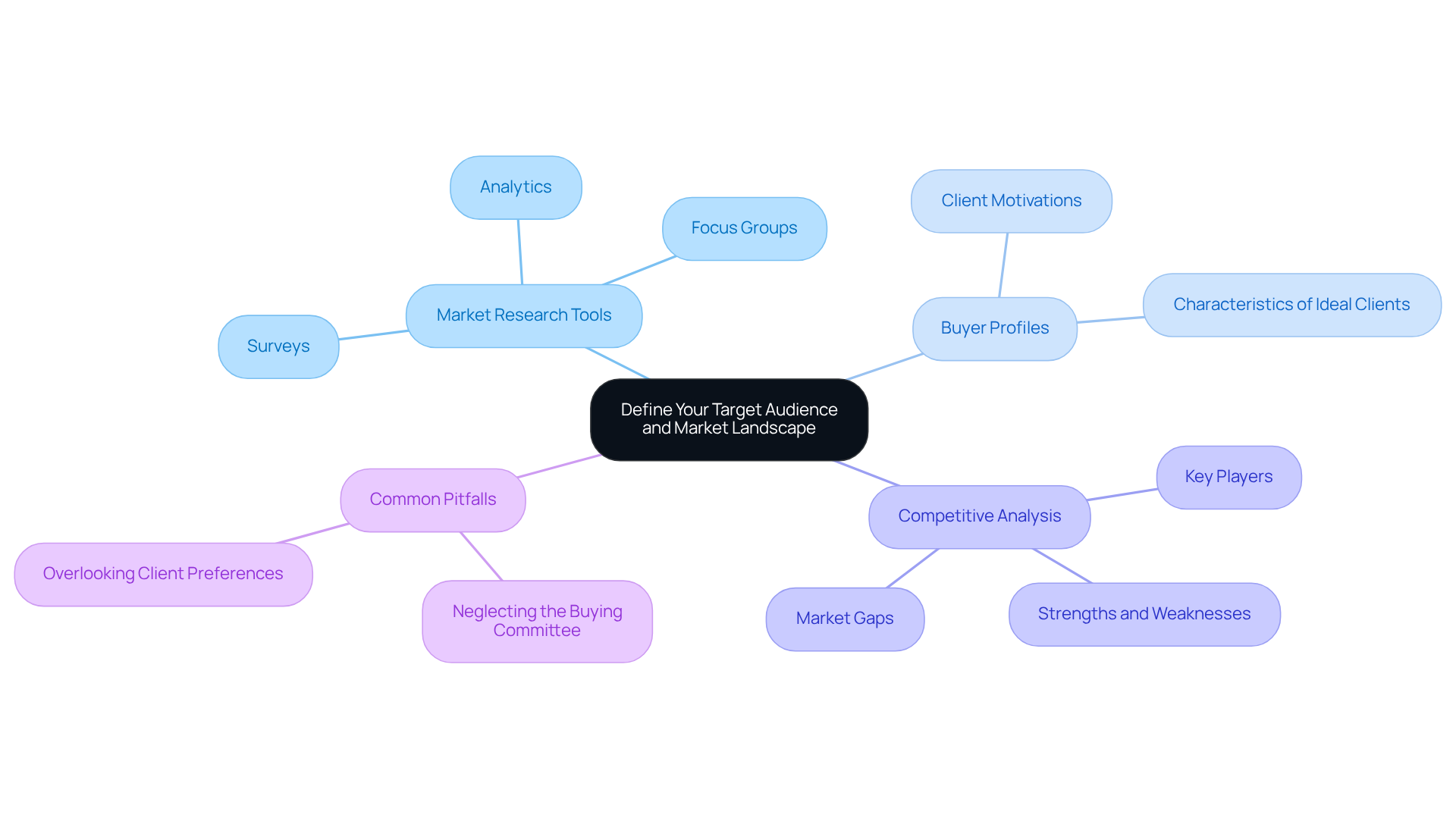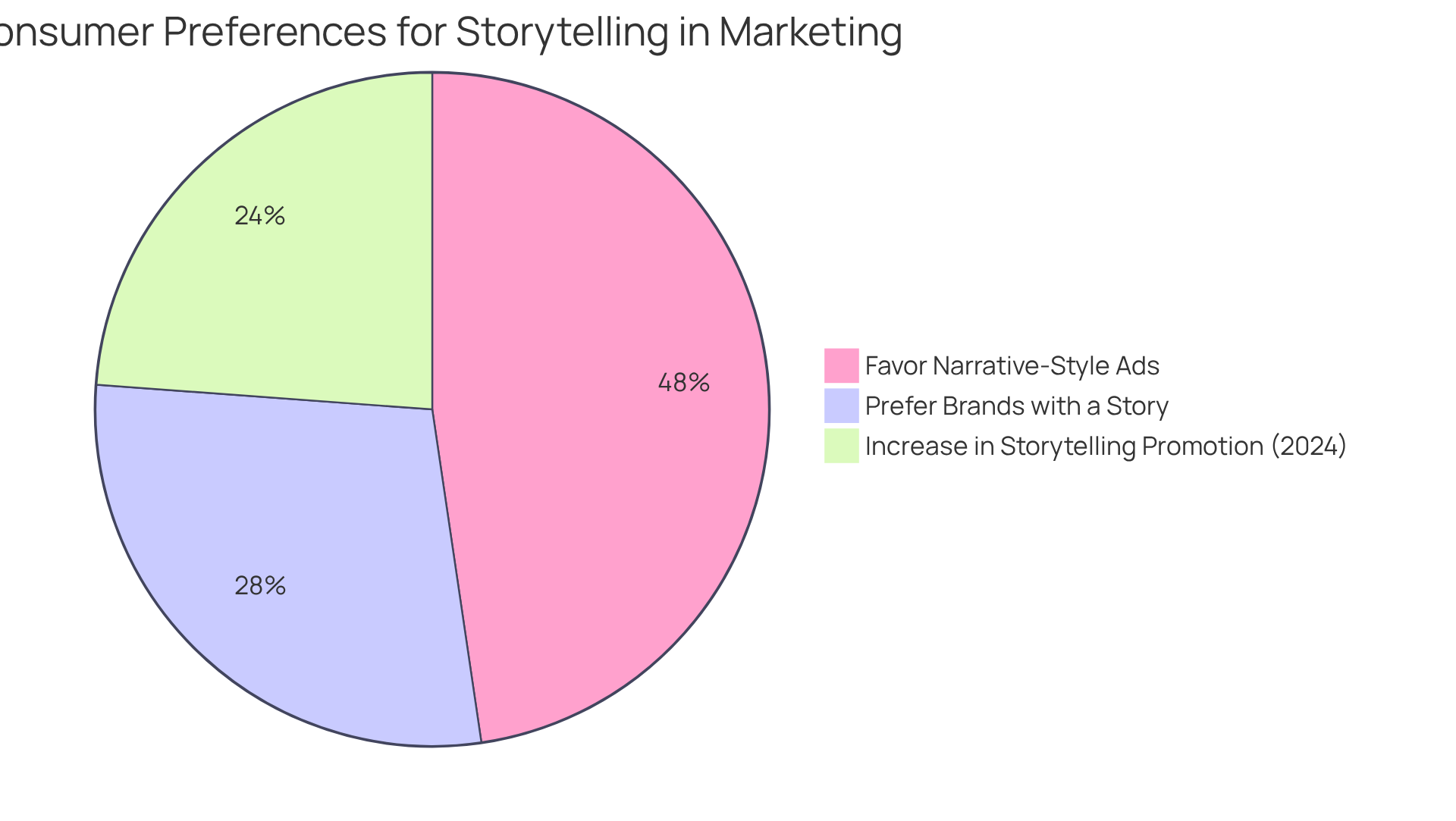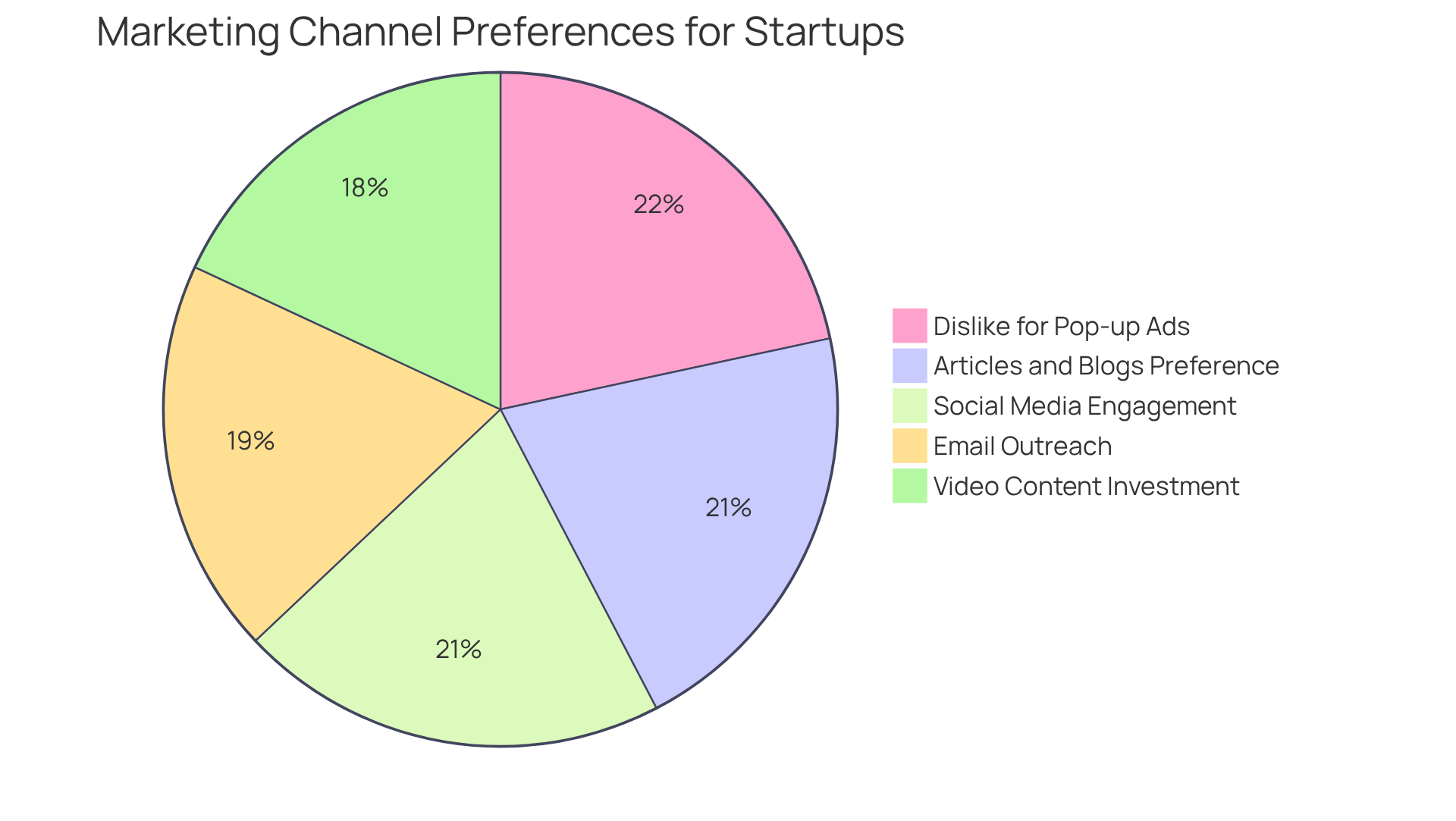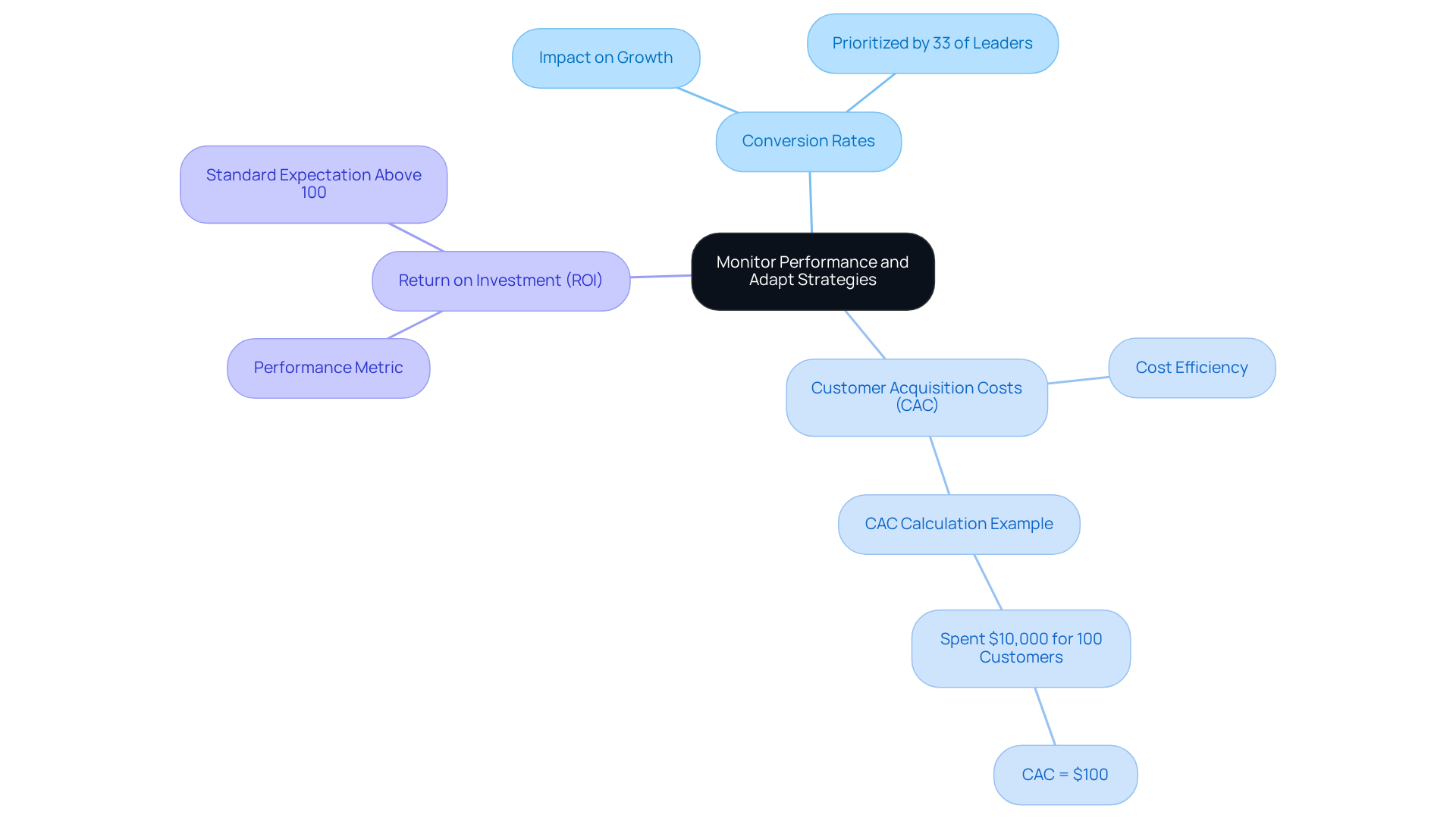Overview
In the fast-paced world of marketing, many founders struggle with defining effective strategies. This challenge can lead to frustration and uncertainty, especially when trying to connect with the right audience. It’s essential to recognize that understanding your target audience is not just a step; it’s the foundation of your entire marketing approach. By truly grasping consumer motivations, you can craft messaging that resonates deeply with them.
Next, the art of storytelling becomes crucial. Compelling messaging isn’t just about facts; it’s about creating an emotional connection. When you share your brand's story, you invite potential customers into your journey, making them feel like part of something bigger.
Choosing the right marketing channels is another vital step. It’s important to select platforms that not only reach your audience but also engage them meaningfully. Think about where your audience spends their time and how they prefer to interact with brands. This thoughtful selection can significantly enhance your outreach efforts.
Finally, monitoring performance is key to adapting your strategies. Tracking KPIs allows you to see what’s working and what isn’t, empowering you to make informed decisions. Remember, this is not just about numbers; it’s about understanding your audience better and refining your approach to serve them effectively.
By following these four steps—defining your target audience, crafting compelling messaging, choosing effective marketing channels, and monitoring performance—you can create a marketing strategy that not only drives results but also nurtures lasting connections with your customers. Embrace this journey with compassion for both yourself and your audience, and you’ll find success in building your brand.
Introduction
In today's fiercely competitive marketplace, many businesses grapple with a significant challenge: not only must they capture attention, but they also need to cultivate authentic connections with their audience. This task can feel overwhelming, as the pressure to stand out mounts. Effective marketing and brand strategy become essential tools in this journey, providing a vital roadmap for companies to identify their target audience, craft messages that resonate, and choose the right channels for meaningful engagement. Yet, amidst the vast array of strategies available, one crucial question remains: how can brands ensure they are not merely heard but truly connect with consumers on a deeper level?
This article explores four essential steps that empower organizations to refine their marketing efforts. By adapting to the ever-evolving landscape, businesses can foster genuine relationships that drive success and growth. Together, we can navigate these challenges and find effective solutions that resonate with both your brand and your audience.
Define Your Target Audience and Market Landscape
To effectively define your , it's essential to start with thorough market research. Consider utilizing tools like surveys, focus groups, and analytics to gather valuable data on demographics, preferences, and behaviors. This foundational step is crucial, as many companies, about 70%, that miss their revenue goals often overlook the entire buying committee in their buyer personas. Moreover, more than 50% of consumers expect businesses to anticipate their needs and provide relevant recommendations before they even make contact. This highlights the importance of truly understanding consumer motivations.
Creating detailed buyer profiles that capture the characteristics of your ideal clients is vital for focused promotion. As Philip Kotler emphasized, the goal of promotion is to know and understand the customer so intimately that the product or service naturally appeals to them. Additionally, conducting a competitive landscape analysis helps identify key players in your market, allowing you to evaluate their strengths, weaknesses, and any potential gaps your company can fill. This dual approach not only clarifies who your audience is but also strategically positions your brand within the market, which is essential for effective marketing and brand strategy.
However, it’s important to remain aware of common pitfalls in market research and buyer persona development. Many firms neglect to consider the entire purchasing committee, leading to ineffective promotional strategies. By understanding client motivations and preferences, you can craft messages that resonate deeply, ultimately driving engagement and conversions. Remember the wise words of David Ogilvy: "Never write an advertisement which you wouldn't want your family to read." This serves as a reminder of the importance of ethical marketing practices, fostering a nurturing connection with your audience.

Craft Compelling Messaging and Unique Value Proposition
Crafting engaging messaging begins with recognizing the challenge of standing out in a competitive market. Establishing your unique value proposition (UVP) is essential; it should clearly express what sets you apart from rivals and why clients should choose you. Many founders feel overwhelmed, wondering how to connect with their audience. By employing storytelling techniques, you can weave a narrative that resonates emotionally, making your message more relatable. Statistics reveal that 55% of consumers are more inclined to purchase a product if they appreciate the story behind it. This illustrates the profound influence of storytelling on consumer behavior.
Consistency across all platforms is crucial. Tailor your messaging to fit the specific channels you utilize, ensuring that your voice remains authentic. For instance, a technology startup might emphasize innovation and reliability, while an eCommerce company could prioritize convenience and client service. Regularly testing and refining your messaging based on audience feedback and engagement metrics is vital to maintaining its effectiveness. Remember, 14% of startup failures stem from ignoring customer insights, a painful reality that can be avoided.
As brands increasingly recognize the impact of storytelling, 92% of consumers favor those that produce narrative-style advertisements over conventional sales presentations. This shift underscores the necessity of . Moreover, the trend of storytelling promotion has seen a remarkable 46% increase in 2024, highlighting its significance in contemporary promotional strategies. By embracing storytelling, you not only connect with your audience but also foster a sense of community and understanding, paving the way for lasting relationships.

Choose Effective Marketing Channels and Tactics
Choosing the right promotional channels can feel overwhelming for technology startups, as it directly impacts their marketing and brand strategy, audience engagement, and conversion rates. Many founders struggle with this decision, often feeling the pressure to connect with tech-savvy audiences effectively. Digital platforms like social media, email promotions, and content strategies offer promising solutions, especially in engaging these audiences through effective marketing and brand strategy. For B2B interactions, LinkedIn emerges as a vital platform, fostering professional networking and lead generation. On the other hand, Instagram shines for visually-driven campaigns, attracting younger demographics who resonate with brands through captivating imagery and videos.
In addition to organic methods, performance techniques such as pay-per-click (PPC) advertising and search engine optimization (SEO) are essential components of a successful marketing and brand strategy for drawing targeted traffic and boosting conversions. With the average ROI on Google Ads reaching $2 for every $1 spent, startups can truly thrive through well-structured PPC campaigns. A/B testing different promotional tactics is also a valuable practice, as it allows companies to discover which approaches resonate most with their audience. This data-informed strategy can lead to meaningful improvements in effectiveness. Yet, it's notable that less than 20% of marketers utilize to enhance conversion rates, revealing a common oversight.
Recent trends indicate that 61% of B2B content creators plan to increase their video content investments in 2025, underscoring the growing importance of video in digital strategies. Furthermore, social media usage statistics reveal that 69.6% of startups actively engage with Facebook, while 64.1% participate in email outreach. This highlights the necessity for a diverse marketing and brand strategy that aligns with audience preferences and behaviors. It's also essential to recognize that 73% of clients express a dislike for pop-up ads, suggesting that startups should consider alternatives. Finally, 70% of consumers prefer discovering products and services through articles and blogs rather than advertisements, which underscores the importance of effective marketing and brand strategy in fostering genuine connections.

Monitor Performance and Adapt Strategies for Success
To effectively monitor promotional performance, it's vital to establish key performance indicators (KPIs) that resonate with your strategic goals. Many founders face the challenge of identifying which metrics truly matter. Important metrics to consider include:
For tech startups, focusing on conversion rates is particularly crucial, as they directly impact growth and sustainability. In fact, more than one in three leaders in promotion prioritize conversion rates as a key performance indicator, while 22% focus on increasing revenue and sales. This highlights just how essential KPIs are in driving success.
Utilizing can feel overwhelming, yet they enable real-time tracking of these metrics, allowing for the quick identification of trends and areas needing improvement. Imagine if a particular promotional channel isn't performing as expected; reallocating resources to more effective strategies could be the key to enhancing overall performance. Consistently assessing your promotional strategies based on performance data is crucial. Did you know that 75% of professionals believe AI-enabled search engines will positively influence their blogs? This underscores the potential for innovation in strategy adaptation. AI can enhance analytics tools by providing deeper insights into consumer behavior, ultimately optimizing your promotional efforts.
Successful KPI tracking examples in digital marketing illustrate the importance of continuous adaptation. Organizations that efficiently track their KPIs can swiftly adjust their approaches, ensuring they remain competitive in a rapidly changing environment. As W. Edwards Deming wisely stated, "Without data, you're just another person with an opinion," emphasizing the necessity of data in making informed decisions. Embracing this approach not only fosters resilience but also positions your business for long-term success. Additionally, with 80% of social media marketers believing consumers will increasingly buy products directly in social apps rather than on brands’ websites, adapting strategies based on performance data is crucial for staying relevant. Remember, you’re not alone in this journey; many founders share these experiences and insights as they navigate the complexities of promotional performance.

Conclusion
Effective marketing and brand strategy can often feel daunting, especially when it comes to truly understanding your target audience and the market landscape. Many businesses find themselves lost in a sea of data, struggling to connect with their ideal clients. This challenge not only leads to missed opportunities but can also create frustration and disconnection from the very consumers they wish to serve. By taking the time to thoroughly research demographics, preferences, and behaviors, companies can craft tailored messaging that resonates deeply with their audience, transforming these challenges into opportunities for genuine connection.
The article outlines four crucial steps that can guide you through this process:
- Defining your target audience
- Crafting compelling messaging and a unique value proposition
- Selecting effective marketing channels
- Continuously monitoring performance
Each of these steps is interconnected, reinforcing the importance of a strategic approach that adapts to consumer insights and market dynamics. The significance of storytelling and ethical marketing practices emerges as a key theme, illustrating how brands can build authentic relationships with their audience, fostering trust and loyalty.
In a rapidly evolving marketing landscape, it’s essential for businesses to remain agile and data-driven. Embracing these strategies can significantly enhance your engagement with clients, nurture lasting relationships, and ultimately drive conversions. The call to action is clear and supportive: prioritize understanding your audience, refine your messaging, select the right channels, and consistently evaluate your performance. By doing so, you can ensure sustained success in the competitive marketplace of 2025 and beyond. Remember, you are not alone in this journey; together, we can navigate these challenges and thrive.
Frequently Asked Questions
Why is defining a target audience important?
Defining a target audience is crucial because it allows businesses to understand consumer motivations and preferences, leading to more effective marketing strategies and better alignment with customer needs.
What methods can be used to conduct market research?
Methods for conducting market research include surveys, focus groups, and analytics to gather data on demographics, preferences, and behaviors.
What percentage of companies miss their revenue goals due to overlooking the buying committee?
About 70% of companies that miss their revenue goals often overlook the entire buying committee in their buyer personas.
What do consumers expect from businesses regarding their needs?
More than 50% of consumers expect businesses to anticipate their needs and provide relevant recommendations before they make contact.
How can businesses create effective buyer profiles?
Businesses can create effective buyer profiles by capturing the characteristics of their ideal clients, which helps in focused promotion and marketing efforts.
What is the importance of conducting a competitive landscape analysis?
Conducting a competitive landscape analysis helps identify key players in the market, allowing businesses to evaluate their strengths, weaknesses, and potential gaps to fill.
What common pitfalls should be avoided in market research and buyer persona development?
Common pitfalls include neglecting to consider the entire purchasing committee, which can lead to ineffective promotional strategies.
How can understanding client motivations enhance marketing efforts?
By understanding client motivations and preferences, businesses can craft messages that resonate deeply with their audience, driving engagement and conversions.
What ethical principle should be considered in marketing practices?
An important ethical principle in marketing is to create messages that are respectful and considerate, as emphasized by David Ogilvy's advice to never write an advertisement you wouldn’t want your family to read.




